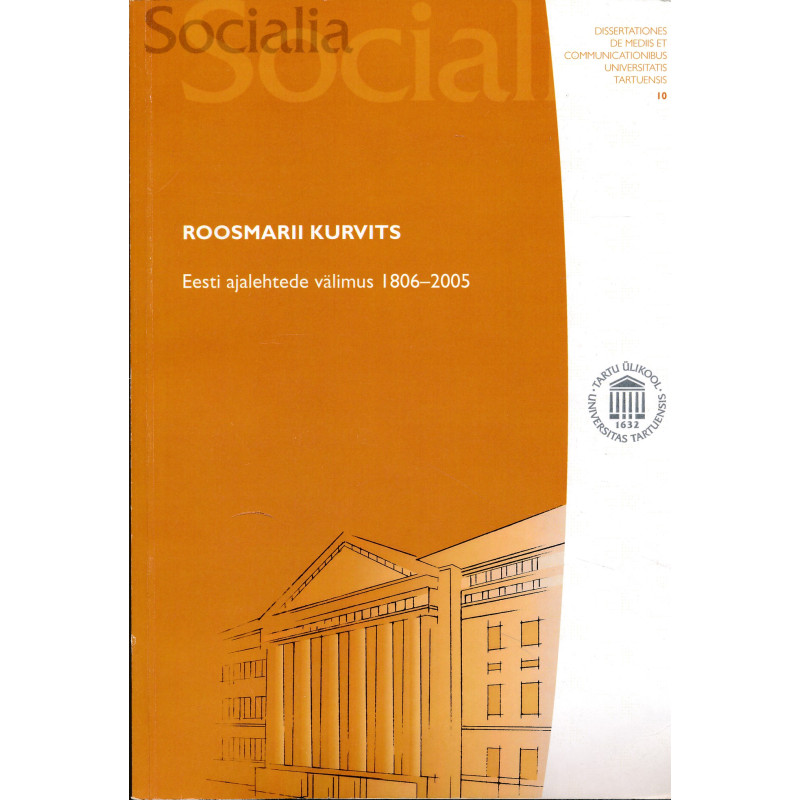




Roosmarii Kurvits
Tartu : Tartu Ülikooli Kirjastus, 2010
422 p. : ill.
ISBN: 9789949195145
Dissertationes de mediis et communicationibus Universitatis Tartuensis, 1406-2313 ; 10
Paperback used dissertation in good condition.
This dissertation examines the transformations of the visual form of Estonian newspapers during a 200 year period, 1806–2005. The visual form includes the persisting visible structure of the newspaper, design and layout devices, the typography and ways of illustration. The aim of the thesis is to describe, analyze and periodize the transformations of the visual form of Estonian newspapers, and to disclose the reasons for the changes. The data were collected primarily by content analysis of three main newspapers at five year intervals. The statistical results are presented in Figures and Tables. Numerous examples of newspaper pages appear in the thesis’ overview.
The visual form of Estonian newspapers comprises five main periods: the Bookish Newspaper (1806–1870s), the Linear Newspaper (1870s¬–1910s), the Hierarchical Newspaper (1920s–1930s), the Ideologized Newspaper (1940–1980s) and the Designed Newspaper (1990s–2005). The newspapers of each period employ different ways for structuring information and vary the extent of segmentation and the size of the page.
The onset of a visual period is always preceded by the interaction of four factors. Rapid social changes cause either an increase or decrease of the average volume of a newspaper issue by at least a factor of 1.5 within five years. Changes in economic competition and changes in the role of the news as a core text-type urge newspapers to transform their visual form. Changes in the professional role of journalists enable them to carry out the visual changes.
Changes in the aesthetics of newspapers ¬– degree of visuality, typographic style and either the simplicity or diversity of visual form – occur fairly independently of social changes and the volume of newspapers.
The thesis concludes, the visual form of newspapers does not develop or transform solely due to either randomness or the influence of ideas of graphic design but is influenced by social, economic, cultural, journalistic and technological changes in society.